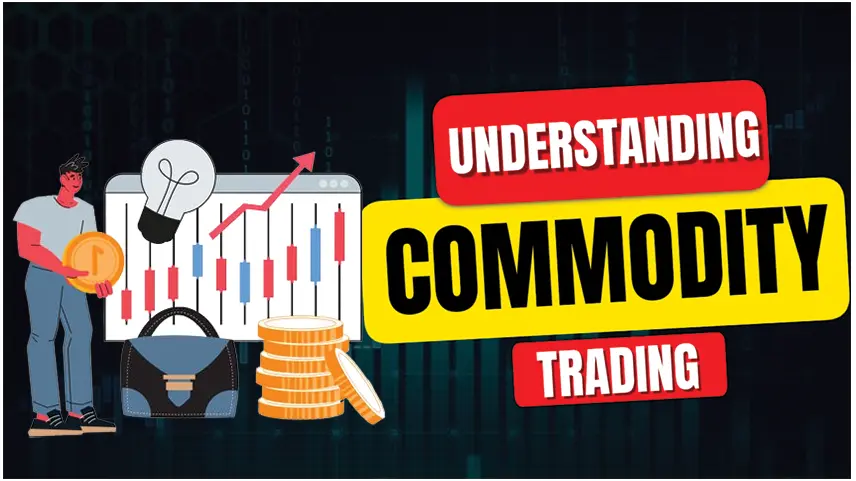Understanding Commodity Trading
Commodity trading involves buying and selling raw materials or primary agricultural products, such as gold, oil, or wheat. While it can be a potentially profitable investment opportunity, it's important to understand the risks and rewards before diving in. This beginner's guide will provide an overview of commodity trading and help you navigate this complex world.

What is commodity trading definition?
Commodity trading is the buying and selling of raw materials or primary agricultural products, such as gold, oil, or wheat. These commodities in trading are traded on exchanges, where buyers and sellers come together to negotiate prices and make transactions. Commodity trading can be a potentially profitable investment opportunity, but it's important to understand the risks and rewards before getting started. If you want to trade in commodity trading stocks then you need to open a commodity trading account. With the help of this commodity trading account, you can do commodity trading 2023.
Types of commodities traded
There are many types of commodities that can be traded, including agricultural products like wheat, corn, and soybeans, as well as energy commodities like crude oil and natural gas. Precious metals like gold and silver are also commonly traded, as well as industrial metals like copper and aluminum. In addition, there are also soft commodities like coffee, cocoa, and sugar that can be traded. Each commodity has its own unique market factors and price drivers, so it's important to do your research before investing.
Understanding supply and demand
Supply and demand are the two main factors that drive commodity prices. When there is a high demand for a commodity and the supply is limited, the price will increase. On the other hand, when there is an oversupply of a commodity and the demand is low, the price will decrease. It's important to monitor global events and market trends that could impact supply and demand, such as weather patterns, political instability, and economic growth. By understanding these factors, you can make more informed decisions when trading commodities.
Factors that affect commodity prices
Commodity prices are affected by various factors, some of which include:
Supply and demand: This is perhaps the most important factor affecting commodity prices. If the supply of a commodity exceeds demand, prices may fall, and vice versa.
Weather: Natural disasters, such as hurricanes, floods, droughts, and other extreme weather events, can have a significant impact on commodity prices, particularly in the agricultural sector.
Political instability: Commodity prices can be affected by political instability in producing countries, including wars, political unrest, and changes in government policies.
Currency exchange rates: Commodity prices are often influenced by exchange rates, as a weaker currency may make a commodity more attractive to foreign buyers.
Speculation: Commodity prices can be influenced by speculators who buy and sell commodities based on their perception of market trends, rather than actual supply and demand factors.
Transportation costs: The cost of transporting commodities, particularly across long distances, can impact prices.
Economic growth: Commodity prices are also influenced by the level of economic growth in consuming countries, as higher levels of economic activity can lead to greater demand for commodities.
Technological advances: Advances in technology can have a significant impact on commodity prices, particularly in industries such as energy, where new technologies can lead to increased efficiency and reduced costs.
Risks and rewards of commodity trading
The commodity trading process can offer high potential rewards, but it also comes with significant risks. The prices of commodities can be volatile and unpredictable, making it difficult to accurately predict market trends. Additionally, commodity trading requires a significant amount of research and analysis to make informed investment decisions. However, successful commodity traders can earn significant profits by identifying market trends and making strategic investments. It's important to carefully consider the risks and rewards before entering the world of commodity trading.
Conclusion
Commodity trading can be a potentially profitable investment opportunity, but it requires a deep understanding of the risks and rewards. Investors need to complete detailed research and analysis to make informed investment decisions. Commodity prices are driven by various factors, including supply and demand, weather, political instability, and technological advances, among others. Despite the potential rewards, commodity trading comes with significant risks due to the volatility and unpredictability of commodity prices. It's important to carefully consider these factors before entering the world of commodity trading. This beginner's guide provides a solid foundation for anyone looking to navigate the complex world of commodity trading.
Are you confused about commodity trading time in India?
Read this article Commodity trading time

0 comments